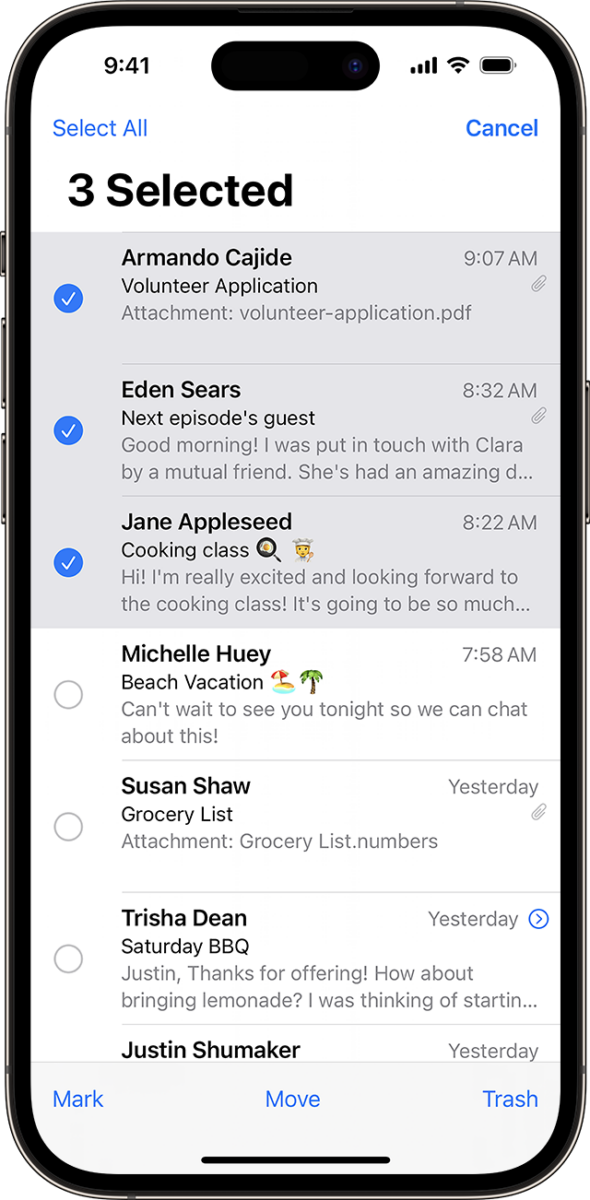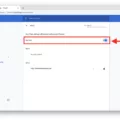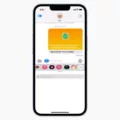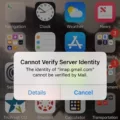Emails are an integral part of our daily communication, allowing us to stay connected and organized. However, it can be frustrating when we delete emails on our iPhones, only to find them mysteriously reappearing. If you’ve experienced this issue, fear not, as there are a few possible explanations and solutions for this recurring problem.
One possible reason why deleted emails keep coming back on your iPhone is due to incorrect settings in your Mail app. To resolve this, you need to ensure that your email account is properly configured to send deleted messages to the correct folder on the server.
To check and adjust these settings, follow these steps:
1. Open the Settings app on your iPhone.
2. Scroll down and tap on “Mail, Contacts, Calendars.”
3. Select the email account in question.
4. Tap on the “Advanced” button.
5. Look for the “Deleted Mailbox” option and tap on it.
6. In the “On The Server” section, choose the “Trash” folder as the destination for deleted messages.
By making these adjustments, the Mail app will now send deleted messages to the appropriate folder on the server, preventing them from reappearing on your iPhone.
Another possible reason behind the reappearance of deleted emails is if your email program on your computer is set up as POP3 while your mobile device is set up to utilize POP3 as well. With this configuration, each device downloads new emails from the server individually, leading to inconsistencies in email deletion.
To resolve this issue, you need to ensure that both your computer and mobile device are set up to utilize IMAP instead of POP3. IMAP allows for synchronization between devices, ensuring that all actions, including email deletion, are reflected across all devices.
How to Switch from POP3 to IMAP?
1. On your mobile device, go to Settings and select “Passwords & Accounts.”
2. Tap on the email account for which you want to change the settings.
3. If it is listed as a POP account, delete it.
4. Add the account back again, and it should default to IMAP.
On your computer, if you are using Gmail, you can easily delete multiple emails by checking the boxes to the left of the messages and clicking on the “Delete” button at the top.
By following these steps and ensuring that your email account is properly configured and synchronized across devices, you should be able to resolve the issue of deleted emails reappearing on your iPhone.
If you find that deleted emails keep coming back on your iPhone, it is likely due to incorrect settings in your Mail app or a configuration mismatch between your computer and mobile device. By adjusting the settings to send deleted messages to the correct folder on the server and switching to IMAP if necessary, you can effectively resolve this frustrating issue and enjoy a clutter-free email experience on your iPhone.

Why Are Your Emails Not Deleting On Your iPhone?
There can be several reasons why your emails are not deleting on your iPhone. Here are some possible causes and solutions:
1. Incorrect Mail App Settings:
– Open the “Settings” app on your iPhone.
– Scroll down and tap on “Mail, Contacts, Calendars.”
– Select the email account that is experiencing the issue.
– Tap on the “Advanced” button.
– Look for the “Deleted Mailbox” option and tap on it.
– Make sure that the “Trash” folder is selected under the “On The Server” section.
– This ensures that deleted messages are sent to the correct folder on the server.
2. Poor Internet Connection:
– If you have a weak or unstable internet connection, your iPhone may not be able to sync properly with your email server.
– Check your Wi-Fi or cellular data connection to ensure it is stable.
– Try deleting the emails again when you have a stronger connection.
3. Email Account Configuration Issues:
– If your email account is not properly configured on your iPhone, it may cause issues with deleting emails.
– Double-check the account settings to ensure they are correct.
– If necessary, remove and re-add the email account on your iPhone to refresh the configuration.
4. Insufficient Storage Space:
– If your iPhone has limited storage space, it may prevent emails from being deleted.
– Go to “Settings” > “General” > “iPhone Storage” to check your available storage.
– Delete unnecessary apps, photos, or files to free up space and try deleting emails again.
5. Email Server Issues:
– Sometimes, the issue may be with your email server and not your iPhone.
– Contact your email service provider to check if there are any known issues or maintenance activities that could be causing the problem.
6. Software Updates:
– Outdated software on your iPhone can also lead to issues with deleting emails.
– Check if there are any available software updates for your iPhone and install them.
– Updating your device’s software can often resolve various bugs and glitches.
If none of the above solutions work, you may need to contact Apple Support or your email service provider for further assistance.
Why Do You Have to Delete Your Emails Twice?
When you find yourself having to delete your emails twice, it is likely due to the way your email program is set up on your devices. This behavior typically occurs when your email program is configured as POP3 (Post Office Protocol 3).
POP3 is an email retrieval protocol that allows your email program to download emails from the server onto your local device. When you have multiple devices, such as a computer and a mobile device, both set up with POP3, each device will download the “NEW EMAIL” from the server individually. This means that when you delete an email on one device, it is only removed from that specific device and not from the server or other devices.
To ensure that your emails are deleted permanently, you will need to delete them separately on each device. This can be a bit inconvenient, as it requires you to delete emails multiple times if you have them synced on multiple devices.
To avoid this double deletion process, you can consider using a different email protocol called IMAP (Internet Message Access Protocol). IMAP allows for synchronization between multiple devices, so when you delete an email on one device, it is automatically removed from all devices and the server. This saves you the hassle of having to delete emails multiple times.
The need to delete emails twice is a result of using the POP3 email protocol, which requires individual deletion on each device. Switching to IMAP can provide a more seamless and synchronized email experience across all your devices.
Why Don’t Your Emails Delete On Your iPad When You Delete Them On Your iPhone?
There could be several reasons why your emails are not deleting on your iPad when you delete them on your iPhone. Here are some possible explanations and troubleshooting steps to resolve the issue:
1. Account Configuration: Check if your email account is configured as POP (Post Office Protocol) instead of IMAP (Internet Message Access Protocol). POP accounts often have synchronization issues between devices, leading to emails not being deleted across all devices. To fix this, you need to reconfigure your email account as IMAP on both devices.
2. Sync Settings: Ensure that the sync settings are properly configured on both devices. Go to Settings/Passwords & Accounts on each device and tap on the account name. Make sure that the email sync option is enabled, allowing the devices to synchronize changes such as deleting emails.
3. Internet Connectivity: Poor or intermittent internet connectivity can prevent the proper synchronization of email deletions between devices. Ensure that both your iPhone and iPad have a stable internet connection, either through Wi-Fi or cellular data.
4. Software Updates: Ensure that your iPhone and iPad are running the latest version of iOS. Outdated software can sometimes cause syncing issues. Check for any available updates and install them if necessary.
5. Restart Devices: Sometimes, a simple restart can resolve syncing issues. Try restarting both your iPhone and iPad and check if the problem persists.
6. Contact Email Provider: If none of the above steps work, it is possible that there may be an issue with your email provider’s servers. Contact your email provider’s customer support for further assistance and to ensure that there are no server-side configurations causing the problem.
By following these troubleshooting steps, you should be able to resolve the issue of emails not deleting on your iPad when deleted on your iPhone.
How Do You Permanently Delete An Email?
To permanently delete an email in Gmail, follow these steps:
1. Open your web browser and go to Gmail.
2. Sign in to your Gmail account using your email address and password.
3. Once you are logged in, locate the email or emails you want to delete. You can select multiple emails by checking the boxes to the left of each email.
4. After selecting the desired emails, look for the toolbar at the top of the page. You will see various options, including a trash bin icon labeled “Delete”. Click on this icon.
5. A notification will appear at the bottom of the screen, indicating that the selected emails have been moved to the Trash folder.
6. To permanently delete the emails from your account, go to the left sidebar and click on the “Trash” label. This will open the Trash folder.
7. Inside the Trash folder, you will see the emails you previously deleted. Again, select the emails you want to permanently delete by checking the boxes next to them.
8. Once you have selected the desired emails, go back to the toolbar at the top of the page and click on the “Delete forever” button. This action will permanently remove the selected emails from your account, and they will not be recoverable.
9. A confirmation message will appear, asking if you are sure you want to delete the emails forever. Review your selection one last time, and if you are certain, click on the “Delete forever” button to proceed.
10. The selected emails are now permanently deleted from your Gmail account and cannot be restored.
It’s important to note that permanently deleting emails removes them from your account entirely. Therefore, exercise caution when deleting emails to avoid accidentally removing important or irreplaceable information.
Check out how to use third-party apps for managing servers on iPhone.
Conclusion
Managing emails effectively is crucial for maintaining a clutter-free inbox and ensuring efficient communication. By properly configuring email settings, such as selecting the correct mailbox for deleted messages, you can streamline the process of organizing and deleting emails.
If you are experiencing issues with deleted emails not being sent to the correct folder on the server, it may be due to your email program being set up as POP3. To resolve this, switch to IMAP configuration by accessing the “Mail, Contacts, Calendars” option in the Settings app on your mobile device. Tap on the appropriate email account, then select the “Advanced” button. From there, tap the “Deleted Mailbox” button and choose the “Trash” folder in the “On The Server” section.
Additionally, if you find that both your email program on your computer and your mobile device are set up as POP3, you will need to change the configuration to IMAP. Access the Settings/Passwords & Accounts option on each device, tap on the account name, and if it indicates a POP account, delete it and re-add it. This should default the account to IMAP, allowing for better synchronization between devices and the server.
Lastly, if you use Gmail, you can easily delete multiple emails by selecting the checkboxes to the left of the messages and clicking the Delete button at the top. This can help you quickly declutter your inbox and maintain a more organized email system.
By implementing these tips and techniques, you can optimize your email management experience and ensure that your inbox remains organized, allowing for efficient communication and productivity.








